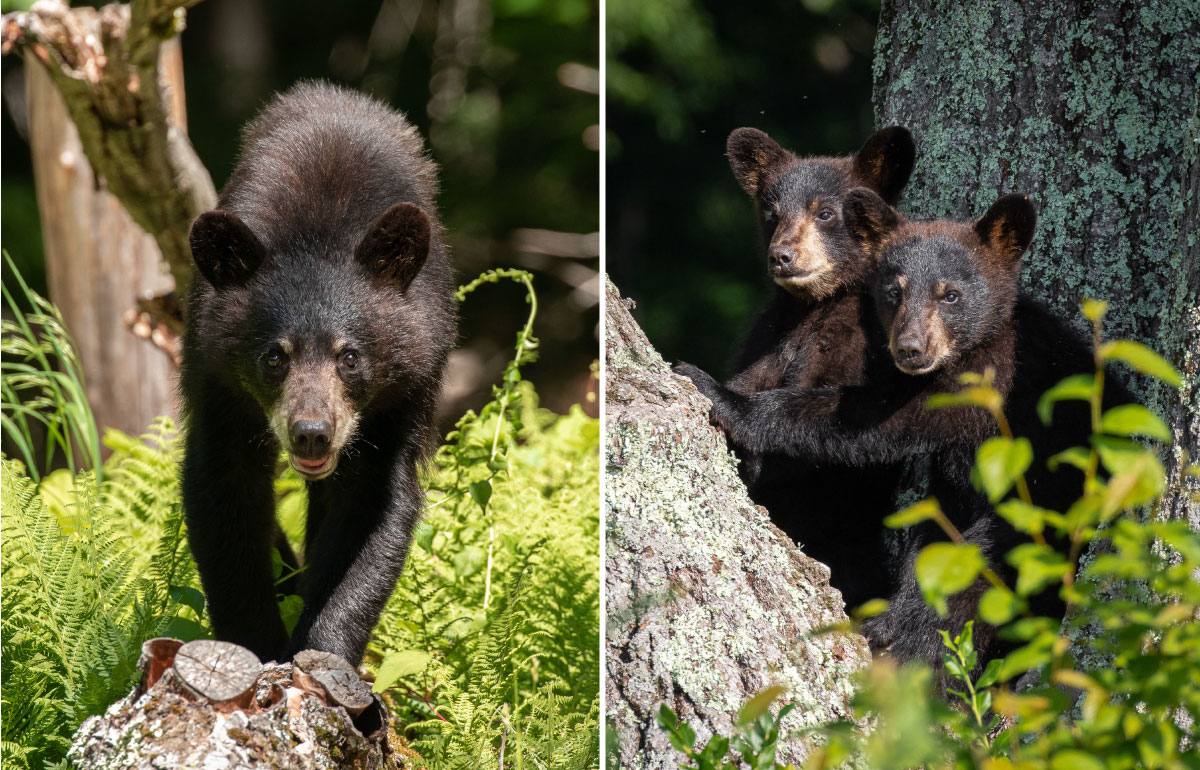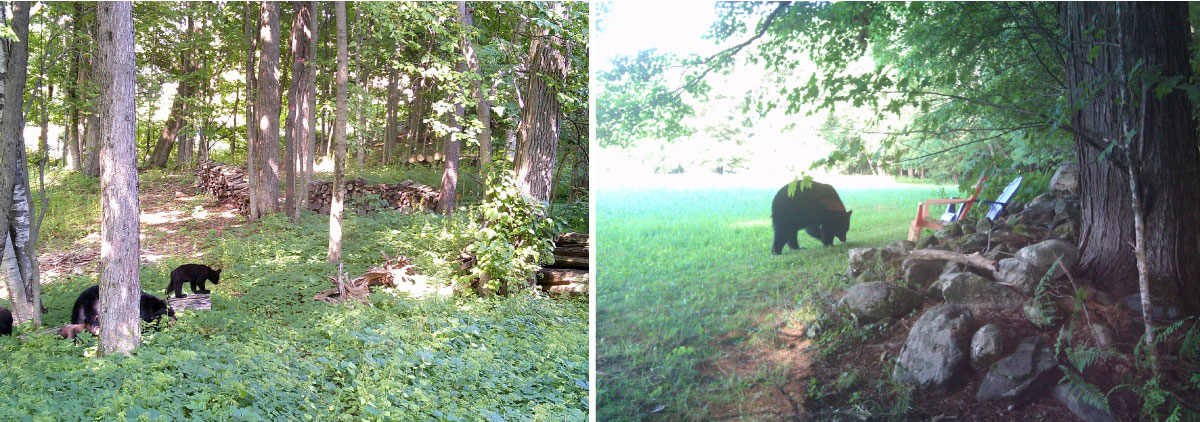
Henry Godek of Heath, Mass., contributed these photos. He told Kristensen, “I think your research project
will be very helpful in learning more about bear behavior and their interactions with humans.”
Like many people, biochemistry major Nawoo Kim ’22 used to assume being a scientist mainly meant toiling in a research facility, wearing “the white lab coat and holding all these chemicals and beakers.” But last year, Biology Laboratory Coordinator Thea Kristensen introduced her to a different kind of science project. “When she told me about citizen science, I was really surprised,” Kim says. “I didn’t know that science went beyond the things you could do in the lab and you could also extend to reaching out to the community.”
Simply put, citizen science is when scientists work with members of the general public to collect, share and analyze authentic data. In the case of the Pioneer Valley Mammal Citizen Science project—led by Kristensen, with Amherst student researchers—residents of Amherst and surrounding towns, and other parts of Massachusetts, are invited to submit photos and videos of the wild mammals they spot in their own back yards and on their favorite hiking trails. Since the project’s website went live in June, locals have contributed hundreds of images of bears, bobcats, foxes, coyotes, deer and at least one porcupine. (Not every mammal species can be counted, though: “If we tried to do bunny sightings, I think we’d be inundated by now,” says Kristensen.)
Her lab’s main focus is tracking the abundance and distribution of black bears in the area; the mammal project grew out of, and will help to inform, an ongoing endeavor called MassBears, done in collaboration with MassWildlife, the Massachusetts Cooperative Fish and Wildlife Research Unit and UMass Amherst. In the summer of 2019, Amherst College students participated in fieldwork, setting up wire “hair corrals” to catch hair samples from passing bears, which they could then genotype in the lab.
In 2020, the COVID-19 pandemic dispersed most of the student researchers to their homes around the country and put the fieldwork and lab work on hold. “Unfortunately, we were not able to go out and collect data on where the bears were moving this summer,” says Ainsley Mackenzie ’22, a biology and statistics double major who received SURF funding to continue working from her home in Connecticut. She and Kim and several more of Kristensen’s students have focused instead on community outreach, to encourage Massachusetts folks to submit their mammal sightings. They’ve developed questions for the Volunteer Interest Form, set up a Facebook page, and had the project publicized in local news outlets including the Daily Hampshire Gazette and MassLive.

Bears photographed by an anonymous citizen (left) and by Charlotte Meryman (right)
Soon, they’d like to begin collaborating with local elementary school classes. “We had a Zoom call with a fifth-grade teacher,” says Rachel Lovejoy ’23. “We laid out some ideas for lesson plans and stuff they could do that would use our data and also allow us to get data from them. It’s looking really exciting.”
Kim, working from her home in the San Francisco Bay Area, points out how the research team’s current inability to gather their own data directly from the field has “showed just how useful citizen science can be in collecting data, because we’ve been getting a lot of pictures and emails and sightings. It’s really cool to see how our project can still continue even with these constraints.”
Now that the data points have started rolling in, the team is considering what kinds of questions they might be able to ask and answer about the region’s mammal populations, and in what directions they might take the research over the coming months and years.
Lovejoy appreciates how much Kristensen lets the students take the reins. “Thea is very enthusiastic and tells us that she wants us to have a good say in this project,” Lovejoy says. “I’m sure there are professors out there who are like, ‘I want to do this, this, this and this,’ but she’s really like, ‘OK, what do you think we should do?’ and asking us to take a big leadership role in this.”
“I’ve worked to have it be pretty student-driven,” Kristensen agrees, praising the undergrads for their ingenuity and dedication. “I need to cheer them on, because they’re amazing.”